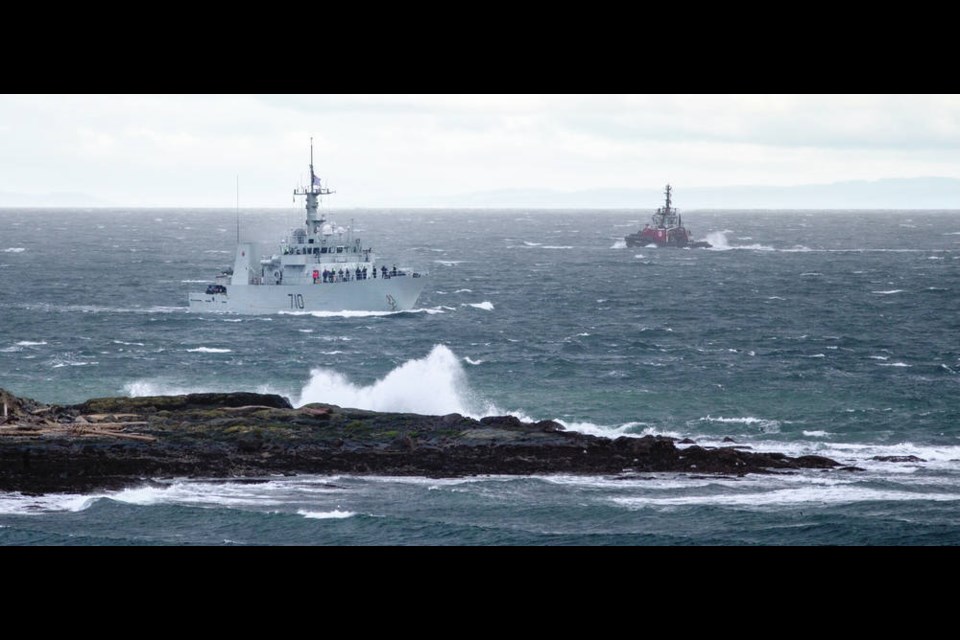HMCS Brandon and Saskatoon are due back at CFB Esquimalt this afternoon following a three-month deployment that saw them seize a combined total of 6,436 kilograms of cocaine off Mexico, Central America and South America.
The two Kingston-class coastal-defence vessels were part of Operation CARIBBE, an annual international mission designed to keep drugs off North American streets. The counter-narcotic operation has been going for 15 years, said Lt.-Cmdr. Maude Ouellet-Savard, commanding officer of HMCS Brandon.
The goal is to disrupt the flow of illicit substances to North America, she said from aboard ship on the journey home, off the coast of Oregon.
“It stops drugs from coming to people, so less drug users, less drug overdoses, also less money made by criminal groups from drug trafficking.”
If the mission saves just one life, the effort is worth it, said Lt.-Cmdr. Nadia Shields, HMCS Saskatoon’s commanding officer.
The drugs seized have an estimated value of $268.3 million US.
The two Canadian ships were assigned to the eastern Pacific in a zone that went from Mexico to Ecuador. “The size of the area that we operated in was basically the size of the continental U.S.A.,” said Shields.
The mission was also active in the Gulf of Mexico.
Ouellet-Savard said the region Brandon and Saskatoon were in is well-known for drug activity, with drugs being shipped from Colombia and Ecuador to destinations including Costa Rica, Guatemala and Mexico.
Brandon and Saskatoon deliberately didn’t work in tandem during CARIBBE, said Shields. “By separating ourselves, we operate as our own unit and we actually have a greater effect that way.”
When intercepting drugs, the ships would typically receive a signal from an aircraft that something suspicious had been spotted, then sail to the area. Rigid-hulled inflatables would then be sent to deal with the suspect vessel. “Once we find narcotics, it’s tested, and then we bring it on board and then we transfer it to a U.S. Coast Guard ship,” Shields said.
From there, the goal is to build a case against the suspects.
Saskatoon had a 45-member crew that included seven law-enforcement personnel from the U.S. Coast Guard, while Brandon had 48 people, including eight from the coast guard.
Shields said the Canadians worked with naval vessels from other countries, including Ecuador, Panama, Colombia and Costa Rica.
Brandon and Saskatoon left Esquimalt Feb. 18.
jbell@timescolonist.com



